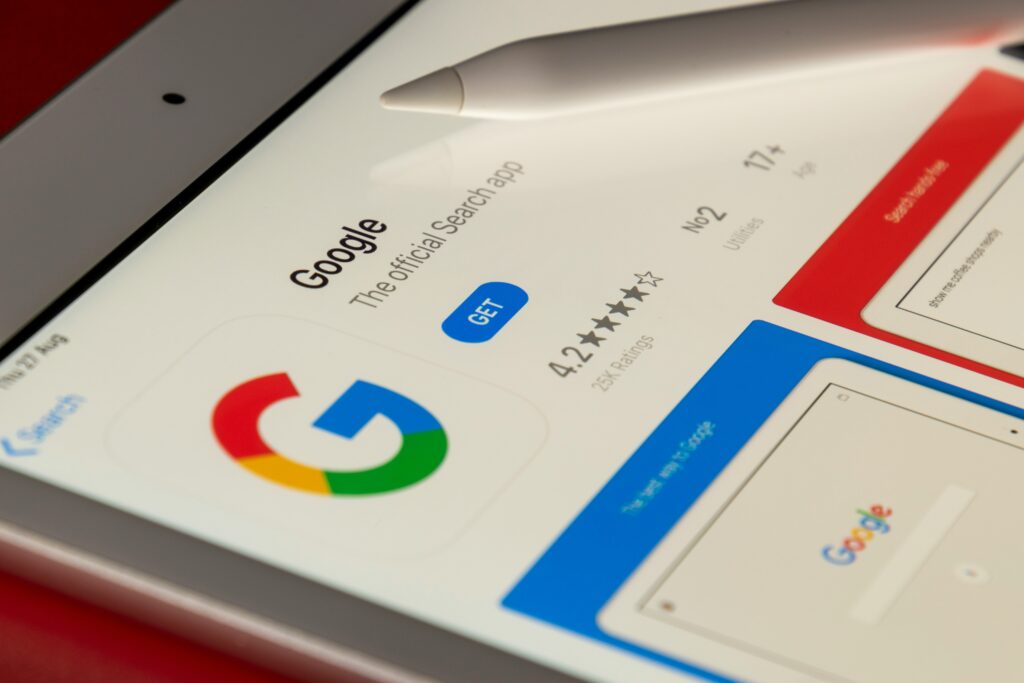Why Media Presence Still Matters
In a digital world constantly fighting for eyeballs, visibility isn’t optional—it’s currency. Attention is the gateway to opportunity: partnerships, conversions, collaborations, and loyalty all start with being seen. No matter how remarkable your product, idea, or story might be, it doesn’t move the needle if no one knows it exists.
But visibility alone won’t carry you. Trust is what turns attention into momentum. When your messaging is consistent—clarity in tone, values, and intent across platforms—you stop being noise and start being known. Audiences can only form trust when they recognize and understand what you stand for. Consistency builds that bridge.
The third layer is the hardest to earn and the easiest to lose: reputation. In a space where everyone has a megaphone, credibility is the filter. What others think and say about you becomes a multiplier—or a barrier. That means playing the long game. Show up, deliver value, keep your brand promise. Reputation doesn’t just build your presence—it protects it.
Strategy 1: Define Your Core Message
The internet’s loud. Everyone’s pitching something, shouting into the same crowded feed. If you want to stand out, start with your voice—and make it unmistakably yours. A clear, defined message isn’t about snappy slogans. It’s about knowing who you are, what you stand for, and making every piece of content echo that.
Why does this matter? Because audiences scroll fast—but they remember the ones who consistently speak to them. If someone sees your Instagram Reel, clicks your newsletter, and stumbles on your YouTube short, it should feel like all roads lead to the same place: you. Tone, visuals, values. If that consistency slips, trust does too.
Examples? Think of Duolingo’s chaotic wit—it works because it’s the same across TikTok, Twitter, and email. Or Patagonia. You know their take on sustainability before they even tell you. Their voice isn’t a veneer; it’s baked into every medium. That’s what brand clarity looks like, and that’s the bar.
Bottom line: your message needs repetition, not reinvention. Say it clean. Say it often. Say it everywhere the same way.
Strategy 2: Leverage the Power of Content Marketing
Value-first content isn’t a trend—it’s the backbone of long-term brand loyalty. When you give before you ask, you signal trust. And in a digital world saturated with noise, trust is your differentiator. That’s why the best-performing strategies don’t just sell—they teach, entertain, or solve a problem upfront.
Formats matter, too. Blogs still offer SEO traction and space for deep-dive authority. Podcasts create intimacy—they let audiences hear your voice, literally and figuratively. And short-form video? Great for grabbing attention, especially when packed with insight or personality. But all these tools are only as good as the story you tell with them.
That brings us to the real core: audience-first storytelling. Knowing who you’re talking to isn’t optional. It decides what format works, what message hits, and what tone resonates. Whether you’re breaking down complex topics or just showing the behind-the-scenes grind—it has to feel made for them, not for everyone.
For more on this approach, check out The Power of Content Marketing in Digital Media.
Strategy 3: Own Your Channels
If you’re still putting all your marketing weight on social media platforms you don’t control, you’re playing with fire. Algorithm shifts, shadow bans, sudden monetization changes—it only takes one platform tweak to tank your visibility. That’s why smart creators and businesses are investing in what they own: email lists, websites, podcasts—channels that aren’t subject to someone else’s rules.
Email lists are the foundation. You’re in inboxes, not fighting an algorithm. Podcasts give you direct time with your audience—unfiltered and unskipped. A website acts as a hub: part resume, part library, part conversion engine. These channels give you leverage and a safety net.
But this isn’t about scattering content randomly. The goal isn’t more platforms—it’s building an ecosystem. Your email should point to your latest podcast episode. That podcast should reference your site’s latest product or blog. Your site should lead people back to subscribing. All of it should work together to drive one message: you’re not going anywhere.
Surviving the digital landscape in 2024 means creating a system that works whether or not you go viral. Campaigns might come and go, but ecosystems pay off over time.
Strategy 4: Strategic Social Media Use
Managing your media presence effectively means going beyond simply showing up on social platforms. In 2024, thoughtful strategy beats sheer frequency. It’s not just about being everywhere—it’s about being purposeful with your efforts.
Aligning Platform and Message
Each social media platform has its own culture, tone, and audience behavior. The content that thrives on LinkedIn won’t necessarily perform on TikTok—and vice versa. Matching your message to the platform ensures that you’re speaking the right language in the right place.
Consider these platform alignments:
- LinkedIn: Great for B2B messaging, thought leadership, and professional development.
- Instagram: Visual storytelling, behind-the-scenes content, and product showcases work well here.
- TikTok: Best for trend-savvy, informal, and rapid-fire content that entertains or educates.
- X (formerly Twitter): Ideal for thought snippets, quick updates, and industry commentary.
- YouTube: Long-form content, tutorials, and storytelling for deep engagement.
Being Present vs. Being Intentional
It’s easy to fall into the trap of posting just to stay active, but without purpose, presence becomes noise. Being intentional means choosing:
- Where you’re active based on ROI—not peer pressure
- What you post based on audience needs—not vanity metrics
- How often you show up based on strategy—not habit
Ask yourself: Does this post reinforce my brand message? Is this the best platform for this type of content?
Tools for Scheduling, Analytics, and Consistency
Maintaining a consistent presence is easier when you incorporate the right tools into your workflow. These tools save time, provide insights, and keep your messaging aligned.
Top tools to consider:
- Scheduling: Buffer, Later, Hootsuite, or Planable for batch-posting and calendar planning
- Analytics: Native insights (Instagram, YouTube, LinkedIn), or third-party platforms like Sprout Social and Metricool
- Content Planning: Notion, Trello, or Airtable to manage themes, drafts, and publishing schedules
Using these tools allows you to work smarter, not harder—ensuring that every post plays its role in your broader marketing strategy.
Strategic social media isn’t about doing more; it’s about doing what matters, where it matters, and when it matters.
Strategy 5: Collaborate to Expand Reach
Partnerships aren’t just feel-good collaborations anymore—they’re strategic moves that expand your reach without doubling your budget. A well-aligned co-branded video or cross-platform campaign can introduce your message to an entirely new, pre-qualified audience. And when done right, both sides win: you borrow each other’s credibility and tap into built-in trust.
Influencer marketing has matured beyond the days of follower counts and flashy product placements. In 2024, smart brands care about impact—authentic engagement, not just exposure. That means working with creators who actually use your product, believe in your message, and have a real connection with their audience. Micro- and mid-tier influencers especially are proving their weight in gold by driving actual conversions, not just clicks.
Joint ventures with brands or creators that share a similar ethos are also growing. Think beyond limited edition merch drops. Whether you’re co-hosting a video series or launching a shared digital product, collaboration adds creative fuel and keeps content fresh. It’s faster to scale when you’re not building alone.
Strategy 6: Measure and Adapt
Metrics aren’t optional—they’re the compass. The basics still matter: reach tells you how big your megaphone is, engagement shows whether people care, and conversions prove whether any of it actually moves the needle. Tracking these three consistently helps separate the noise from the signal.
But it doesn’t stop there. Smart marketers build feedback loops into everything. Comments, email replies, click-through rates, drop-off points—this is real-world input you can act on. Tools like Google Analytics, podcast dashboards, or even social poll results can clarify what parts of your message resonate and what falls flat.
Here’s the catch: don’t panic at every dip. Metrics fluctuate. Context is everything. Adaptation isn’t about chasing every trend—it’s about recognizing when your audience is shifting and meeting them halfway. Make small, strategic shifts. Test. Learn. Repeat. It’s less about flashing big moves, more about knowing when to tweak the sails just enough to catch the wind.
Final Takeaways
Media presence grabs attention, but it can’t fake impact. In 2024, the focus has to shift from just being seen to delivering something that actually matters. Views without value are cheap. What holds weight is content that solves, inspires, or educates—consistently.
Think of platforms as tools, not destinations. It’s easy to get caught in the cycle of chasing trends or trying to game algorithms. But the strongest brands stay anchored in their message. They know what they stand for and who they’re talking to. Platforms are just the vehicle; your message is the engine.
At the end of the day, media presence doesn’t build a brand from scratch. It shows what the brand already is. The messier your foundation, the harder it is to scale clean. So build with intention, show up with clarity, and let the presence reflect who you’ve already done the work to become.




